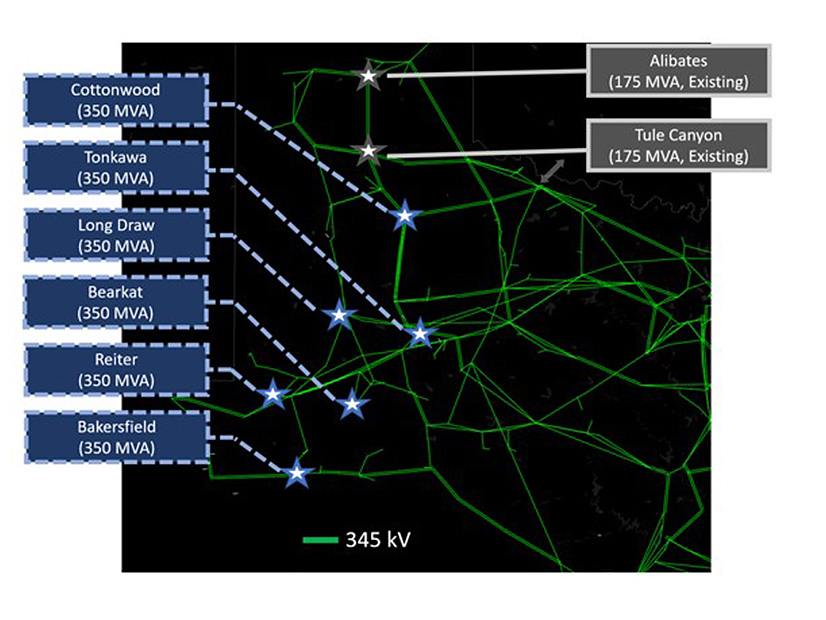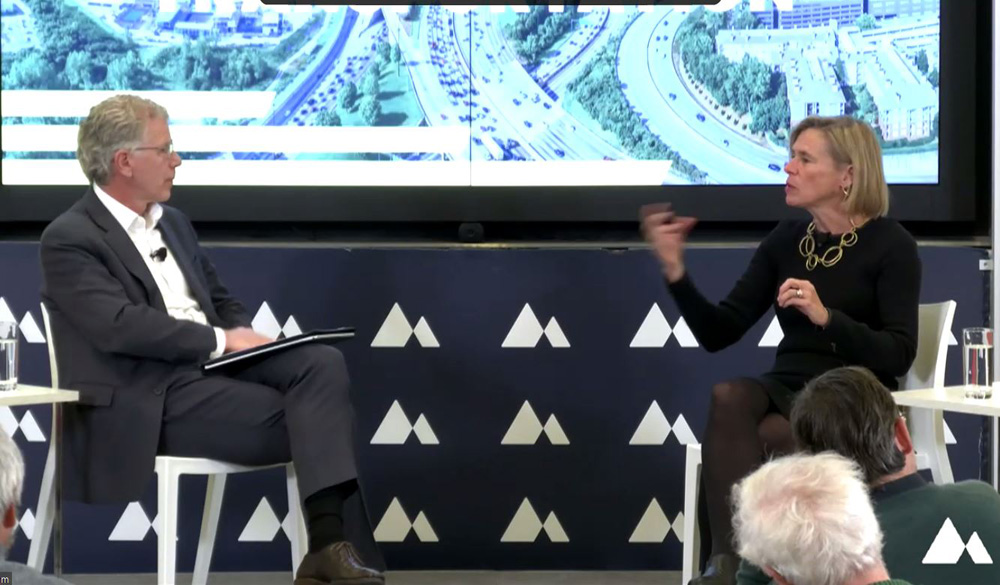Members Support 2024’s Ancillary Services Methodology, Despite Costs
ERCOT stakeholders endorsed the grid operator’s proposed ancillary service methodology for 2024, but only after extracting a commitment from staff to bring the proposal back for further review by April 30.
The approval came after ERCOT’s Independent Market Monitor, Potomac Economics, said the methodology has generated artificial shortages that produced “massive” inefficient market costs totaling about $12.5 billion this year through Nov. 27.
The Monitor also told the Technical Advisory Committee that the methodology diminishes reliability by withholding units needed to manage transmission congestion, is not based on sound reliability criteria, and has led to excessive reserves procurements that far exceed those by other grid operators.
“I don’t want to exaggerate how bad this is, but this is the worst performance we’ve ever seen since the beginning of organized electricity markets almost 25 years ago,” Potomac’s David Patton said. “I’ve been racking my brain to try to figure out whether I’ve ever seen anything like this, and I really haven’t.”
Patton, whose firm also monitors the MISO, NYISO and ISO-NE markets, said there’s no way to pretend the costs are “efficient,” as ERCOT was not experiencing shortages during periods with $5,000 capped prices.
“We weren’t close to being in shortage and yet the market, with this large increase in 10-minute reserves that gets held out of the energy market, perceived a shortage that didn’t really exist,” he said.
“Inefficiency is not how we operate in this market and provide reliability. Our objective is to provide reliability at lowest cost,” said MD Energy Consulting’s Mark Dreyfus, who represents the city of Eastland and 154 other commercial consumers. “Since the very beginning of this market, commercial consumers have been very clear. They support competitive market outcomes, wherever possible. By supporting competitive market outcomes, we will get the lowest cost reliability possible.”
At issue is ERCOT contingency reserve service (ECRS), the grid operator’s first new ancillary service in 20 years that was deployed early this summer. Dreyfus called for a commitment to reconsider how the service is used and to better understand the Monitor’s report.
The service is economically dispatched within 10 minutes of deployment, using capacity that can be sustained at a specified level for two consecutive hours and supplementing the ISO’s conservative operations posture of setting aside ample reserves.
The IMM has said ECRS essentially meets the same reliability requirements that previously were met solely by responsive reserve service. In its initial assessment of ancillary services, the monitor said ECRS “likely” raised the real-time market’s energy value by at least $8 billion. (See ERCOT Board, IMM Debate Ancillary Service Costs.)
ERCOT disputed the Monitor’s analysis, noting the $12.5 billion figure is not the direct cost of procuring ECRS, but a study that estimates how much lower real-time energy costs would have been if resources were not reserving capacity to provide ECRS. It said in a statement that actual costs were likely much less than that and other factors, such as the historically hot summer, contributed to increased prices.
Potomac urged stakeholders to reject the AS methodology and requested that ERCOT use a reliability analysis that models the uncertainties that drive reliability problems and then quantify the needed reserves. It said staff could mitigate its concerns with several changes, including reducing ECRS’ deployment back to one hour.
ERCOT staff has made minor changes to the 2024 AS methodology. It said the ECRS proposal reflects the minimum volume of 10-minute reserves needed to cover the risks should a large unit trip offline or frequency losses occur.
However, the grid operator also allowed that a “separate, broader discussion is warranted” to identify improvements to the ECRS market.
Given that caveat and as required by the protocols, TAC endorsed the 2024 methodology with a 21-3 vote. Six members abstained. An earlier vote to approve the methodology as recommended by ERCOT failed 12-7 with 11 abstentions.
Potomac’s four-year contract as ERCOT’s Independent Market Monitor expires Dec. 31. It remains the only listed applicant to the Public Utility Commission’s request for a new four-year contract, but no announcement has been made (55222).
Staff Withdraws DRRS Change
The committee approved ERCOT’s request to withdraw a nodal protocol revision request (NPRR1203) implementing a new ancillary service that faces a tight statutory timeline.
Staff had proposed adding dispatchable reliability reserve service (DRRS) as a subtype of non-spinning reserve, saying it was the only way to meet a Dec. 1, 2024, deadline set by state law. TAC tabled the NPRR in October after lawmakers objected to ERCOT’s plans and said the standalone service should be developed even if it fails to meet the deadline. (See ERCOT Technical Advisory Committee Briefs: Oct. 24, 2023.)
The PUC last month linked its approval of the budget to meeting several performance metrics. They included implementing the DRRS product “aligning it with the real-time co-optimization plus battery project (RTC+B). (See Texas PUC OKs Smaller Budget, Admin Fee Increases for ERCOT.)
Kenan Ögelman, ERCOT’s vice president of commercial operations, said staff plans to develop DRRS as a standalone service “as expeditiously as possible” and will file a draft NPRR by April that aligns with real-time co-optimization’s (RTC) implementation. He also agreed with stakeholders’ requests for a workshop to review the NPRR’s details.
“The goal would be to make sure everybody is fully informed on the functionality and features that we were putting into the NPRR and that we absolutely got stakeholder feedback on making that better or adjusting it, such that we had a product that the stakeholder community was comfortable with and that also met the statutory goals,” he said.
The DRRS work will also align with the Real-time Co-optimization plus Batteries Task Force, which is developing the market tool that procures energy and ancillary services every five minutes. The team is developing business requirements for RTC and single-model batteries, with plans to complete its project in 2026. (See ERCOT Technical Advisory Committee Briefs: Aug. 22, 2023.)
“The feedback I’ve gotten so far from the commission is RTC+B is the priority,” Ögelman said.
TAC endorsed ERCOT’s plan 28-0, with Luminant and Lower Colorado River Authority (LCRA) both abstaining over the statutory deadline concerns. Luminant’s Ned Bonskowski said his company did not want to stand in the way of those wanting to move forward.
“I am a little worried about certain policy decisions being driven by secondary timeline goals,” LCRA’s Emily Jolly said.
Staff also withdrew two other binding document requests (OBDRR049, OBDRR050) related to NPRR1203.
West Texas Projects Endorsed
TAC endorsed two Tier 1 transmission projects in the West Texas weather zone projected to cost a combined $1.17 billion, placing both on the combination ballot.
The Regional Planning Group’s West Texas Synchronous Condenser project accounts for the bulk of the costs at $892.2 million. It involves installing synchronous condensers at six 345-kV substations to address reliability risks in West Texas driven by the region’s increased penetration of inverter-based resources (IBRs). ERCOT expects more than 42 GW of IBR capacity by 2026 in the zone.
Staff said the prevalence of IBRs coupled with the lack of conventional synchronous resources has further weakened the system and increased the likelihood of potential instability issues, such as the recent Odessa disturbances. (See NERC Repeats IBR Warnings After Second Odessa Event.)
The project, involving Wind Energy Transmission Texas, LCRA Transmission Services Corp. and Oncor, has an in-service date of May-October 2027.
The second project, submitted by Texas-New Mexico Power, is projected to cost $273.1 million. The upgrade involves the construction of two 345-kV substations, two 345/138-kV substations and 20 miles of 138-kV line to address reliability needs. The project is expected to be completed by June 2027.
With capital costs exceeding $100 million, the Tier 1 projects must be approved by ERCOT’s board, which next meets Dec. 18-19.
TAC Remembers Brad Jones
Members shared the memories of the late Brad Jones, who chaired TAC at one point and served as ERCOT’s interim CEO and COO. Jones, who also served as NYISO’s CEO, passed away Nov. 8. (See Brad Jones, Former ERCOT, NYISO CEO, Dies at 60.)
Reliant Energy Retail Services’ Bill Barnes, who attended a memorial service Saturday in Austin along with many other stakeholders, said ERCOT’s membership was one of his most important families.
“We heard a lot about Brad’s optimism,” he said. “The thing that I will take with me forever is the spirit of compromise. That’s why we’re here, to hear from different perspectives, hear from other segments, each other’s opinions, and think about how we can work together as a team to solve the very challenging problems that face us.”
“You could argue with Brad up and down, back and forth, and respect was always maintained through that entire process,” said Engie’s Bob Helton, whose relationship with Jones goes back to the market design work of the late 1990s. “That’s one of the things that was wonderful about Brad. He would listen to you, argue with you, and we’d come to a good decision.”
“Brad is one of the core reasons we have what we have today,” Golden Spread Electric Cooperative’s Mike Wise said. “He’s one of the godfathers of our market.”
“Obviously, Brad was a very special and influential person at ERCOT. He had two stints with us, made amazing contributions, and brought a lot of joy and laughter to the folks at ERCOT,” Ögelman said. “In some of our darkest moments, he was our shining light as we were trying to deal with the aftermath of Winter Storm Uri. I certainly miss him every day and appreciate all that he’s done for everybody in this room and in the industry and ERCOT as well.”
Retail Choice Coming to Lubbock
TAC’s unanimous endorsement of the combo ballot resulted in approval of a change to the retail market guide (RMGRR176) that lays out the processes Lubbock Power & Light must use when it begins offering customers their choice of electric providers March 4.
Oncor’s Debbie McKeever, chair of the Retail Market Subcommittee, told the committee that more than two dozen electric retailers are preparing to offer plans in LP&L’s service territory.
The municipal utility is migrating the final 30% of its load from SPP to ERCOT by Dec. 11. LP&L first announced its intention to join ERCOT’s competitive market in 2015. Texas regulators approved the transition in 2018. (See Six Years in the Making: LP&L Migrates Load to ERCOT.)
The combo ballot included three other NPRRs that, if approved by the board and the PUC, would:
-
- NPRR1181: Require qualified scheduling entities representing coal or lignite resources to submit to ERCOT a seasonal declaration of coal and lignite inventory levels and to notify ERCOT when the inventories drop below target and critical-level protocols.
- NPRR1201: Reduce exposure from resettlements and default uplift invoices for historical operating days by limiting resettlement timelines due to errors that are discovered and a market notice is provided to the market within one year after the operating day. This limit does not apply to alternative dispute resolution resettlements, a procedure for return of settlement funds or a board-directed resettlement addressing unusual circumstances.
- NPRR1204: Implement the state-of-charge (SOC) concepts necessary for awareness, accounting and monitoring energy storage resources’ SOC within the RTC+B project.

